Ruddy Turnstone, Steenloper, Steinwalzer, Rola-do-mar, Vuelvepiedras Comúm
Spotted in the Alentejo region of Portugal. Turnstone sound
Turnstones are the bird species in the genus Arenaria in the family Scolopacidae. They are closely related to calidrid sandpipers and might be considered members of the tribe Calidriini.
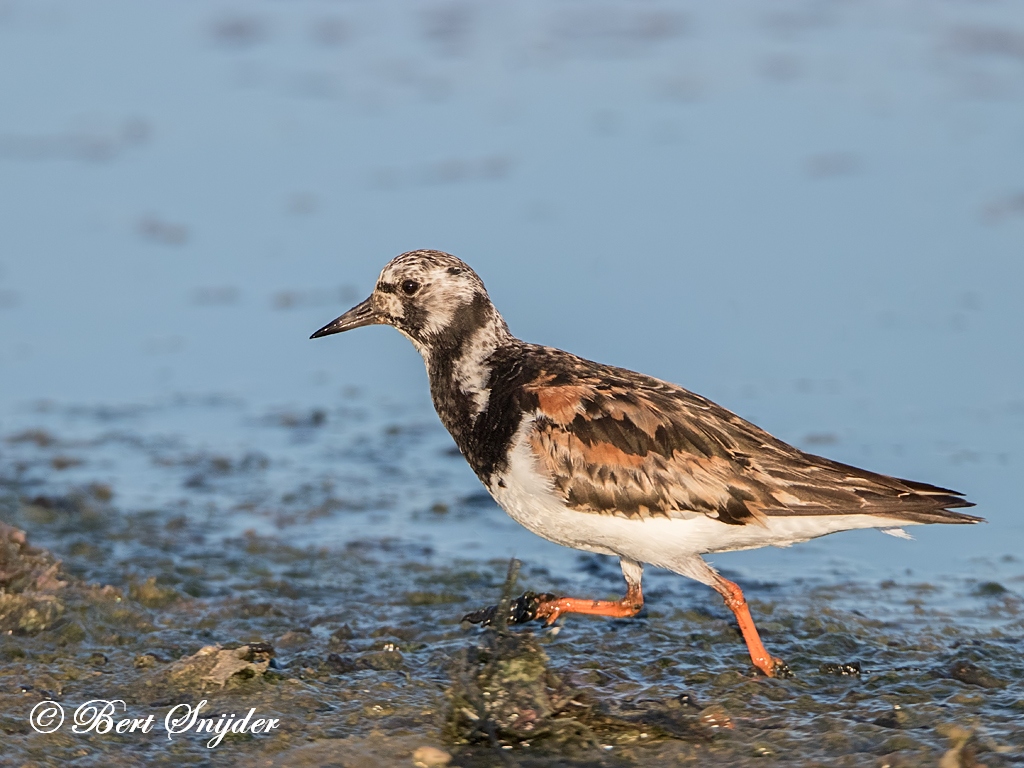
More photos at the bottom of this page.
Both birds are distinctive medium-sized waders. They are high Arctic breeders, and are migratory. These chunky powerful birds have strong necks and bills well suited to their feeding technique. As the name implies, these species readily turn stones or seaweed looking for hidden invertebrates. They are strictly coastal, preferring stony beaches to sand, and are often found with other waders such as Purple Sandpipers.
Their appearance is striking in flight, with white patches on the back, wings and tail.
The Ruddy Turnstone (or just Turnstone in Europe), Arenaria interpres, has a circumpolar distribution, and is a very long distance migrant, wintering on coasts as far south as South Africa and Australia. It is thus a common sight on coasts almost everywhere in the world.
In breeding plumage, this is a showy bird, with a black-and-white head, chestnut back, white underparts and red legs. The drabber winter plumage is basically brown above and white below.
This is a generally tame bird and is an opportunist feeder. Unlike most waders, it will scavenge, and has a phenomenal list of recorded food items, including human corpses and coconut.
The call is a staccato tuck- tuck- tuck.
The Ruddy Turnstone is one of the species to which the Agreement on the Conservation of African-Eurasian Migratory Waterbirds (AEWA) applies.
The Black Turnstone (Arenaria melanocephala) has a similar structure to its widespread relative, but has black upperparts and chest, and white below. It has a much more restricted range than the Ruddy Turnstone, breeding in western Alaska, and wintering mainly on the Pacific coast of the USA.
There exists a fossil bone, a distal piece of tarsometatarsus found in the Edson Beds of Sherman County, Kansas. Dating from the mid-Blancan some 4-3 million years ago, it appears to be from a calidriid somewhat similar to a Pectoral Sandpiper, but has some traits reminiscent of turnstones. Depending on which traits are apomorphic and plesiomorphic, it may be an ancestral representative of either lineage.
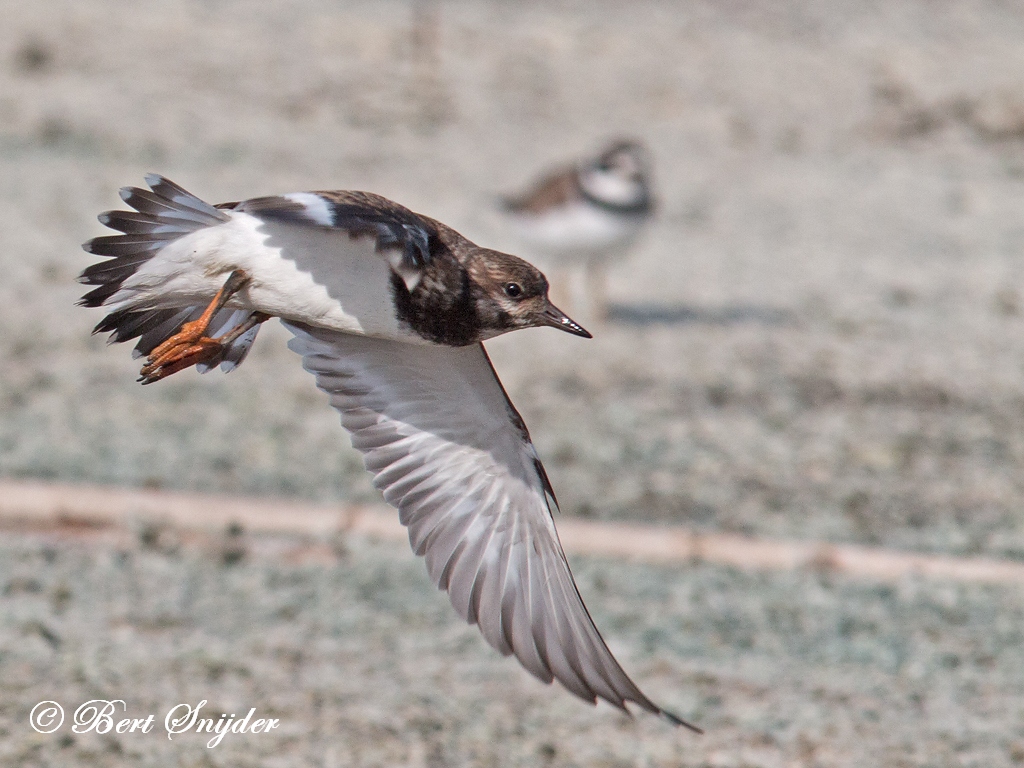

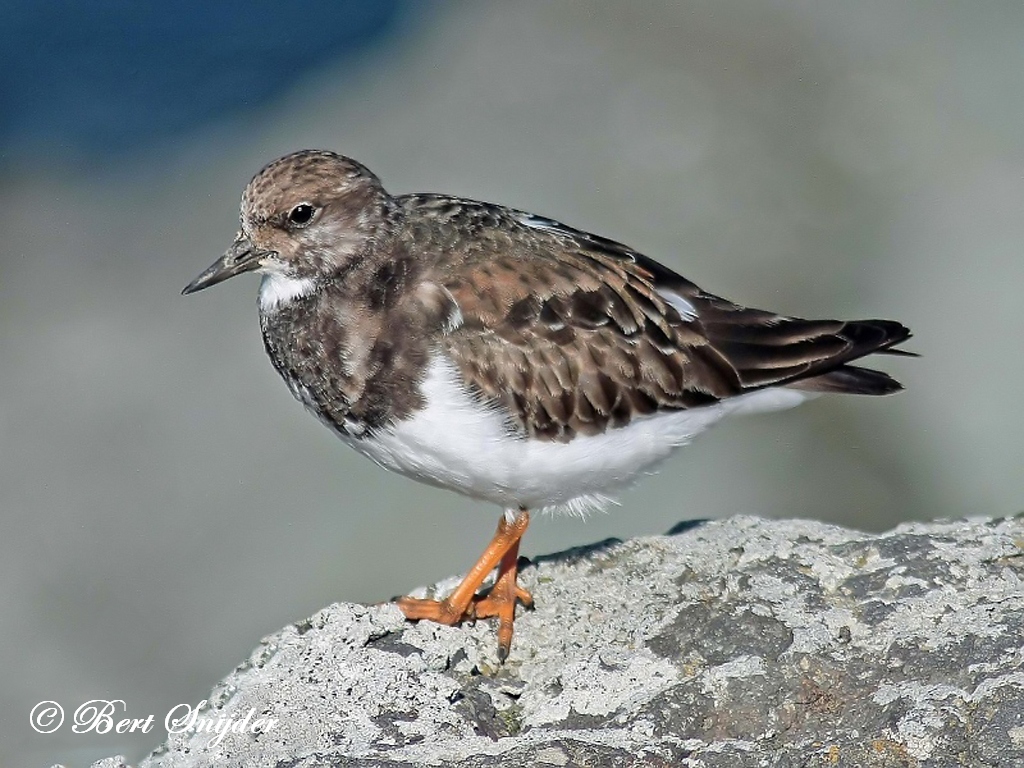
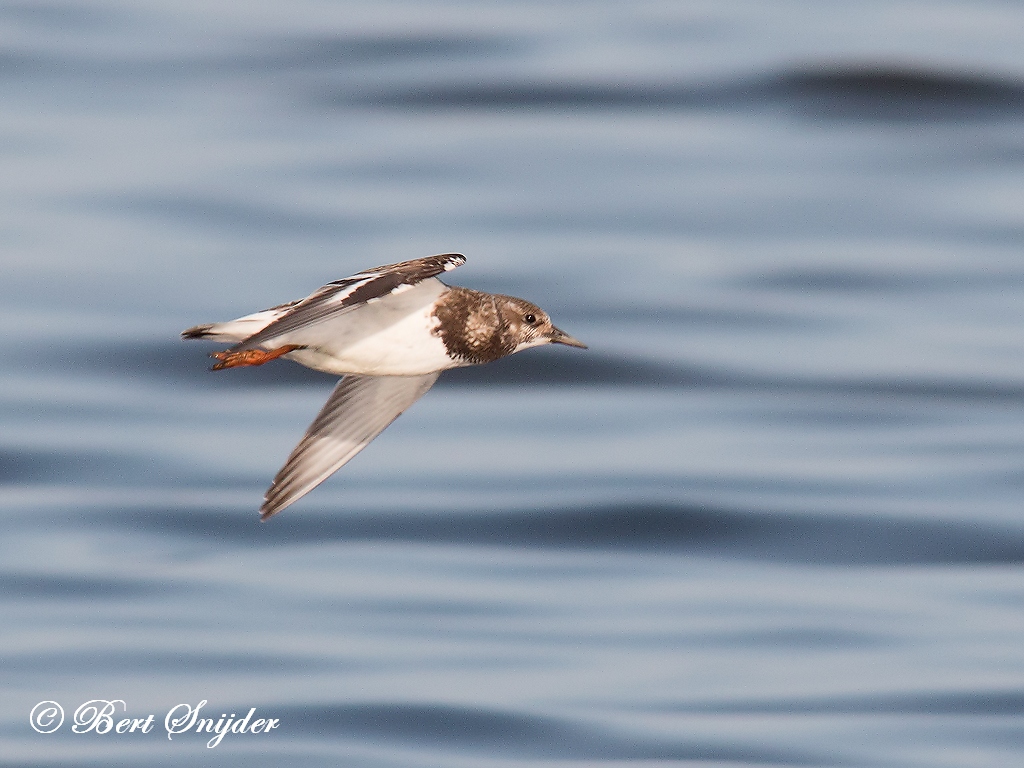

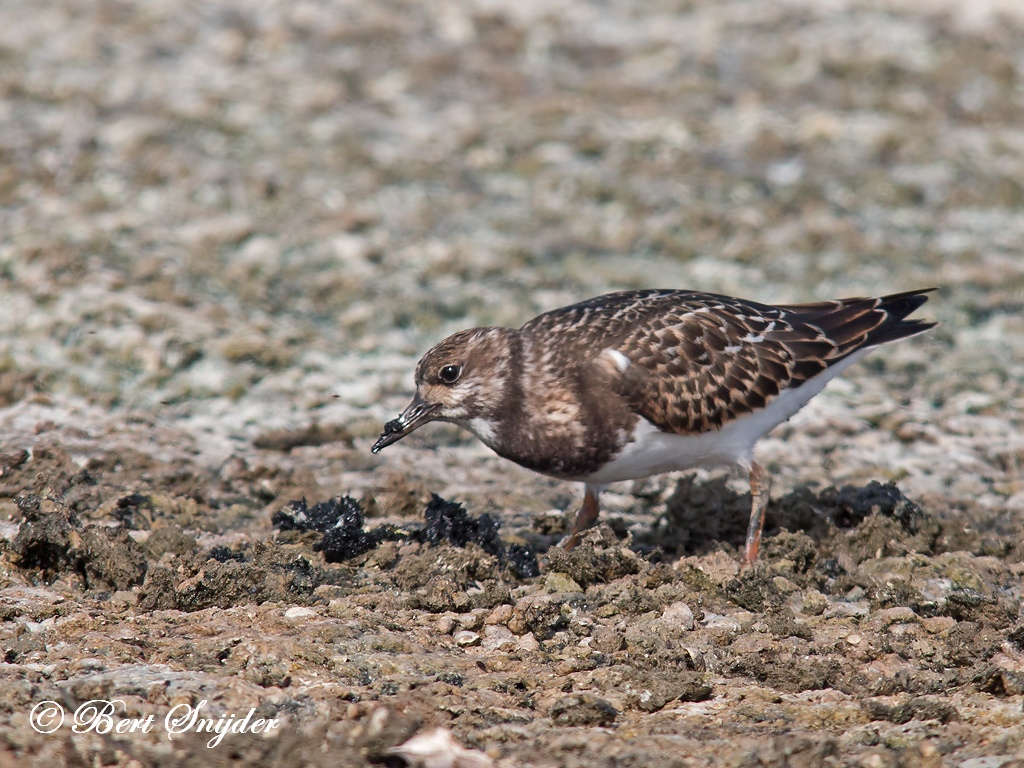
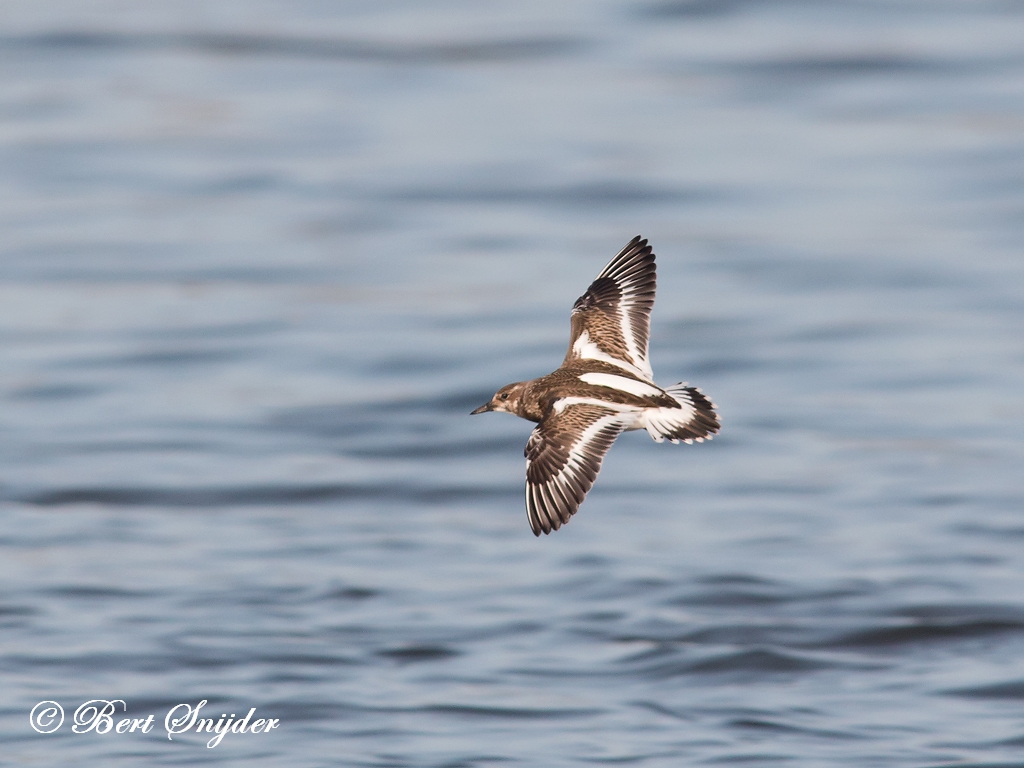
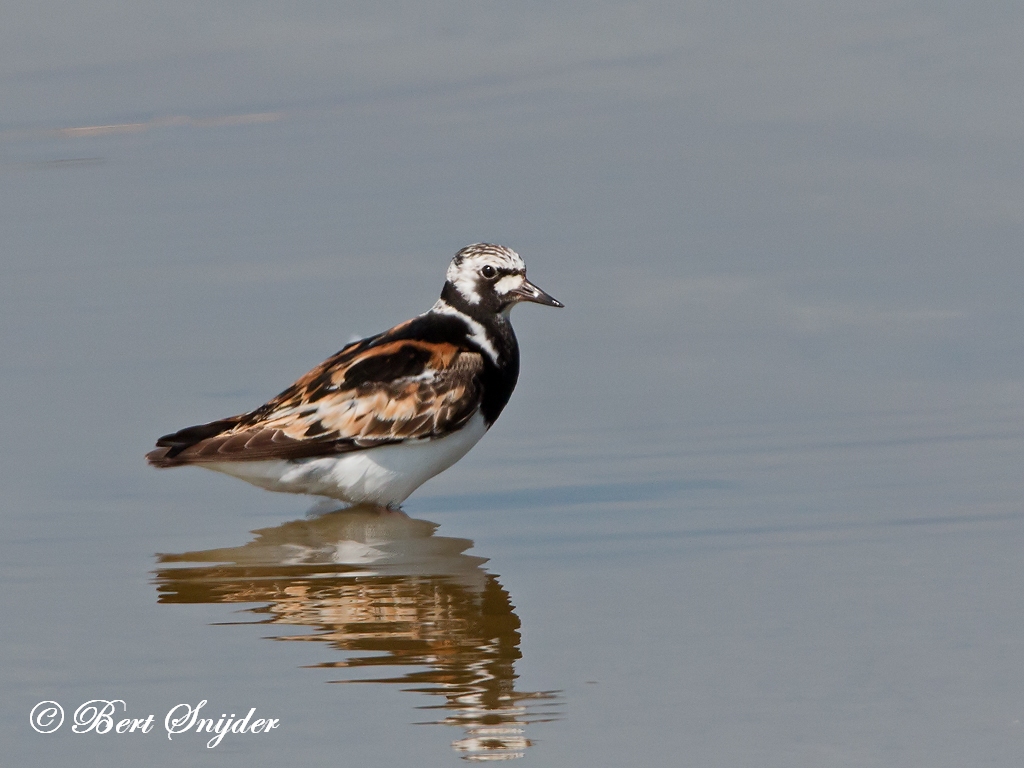

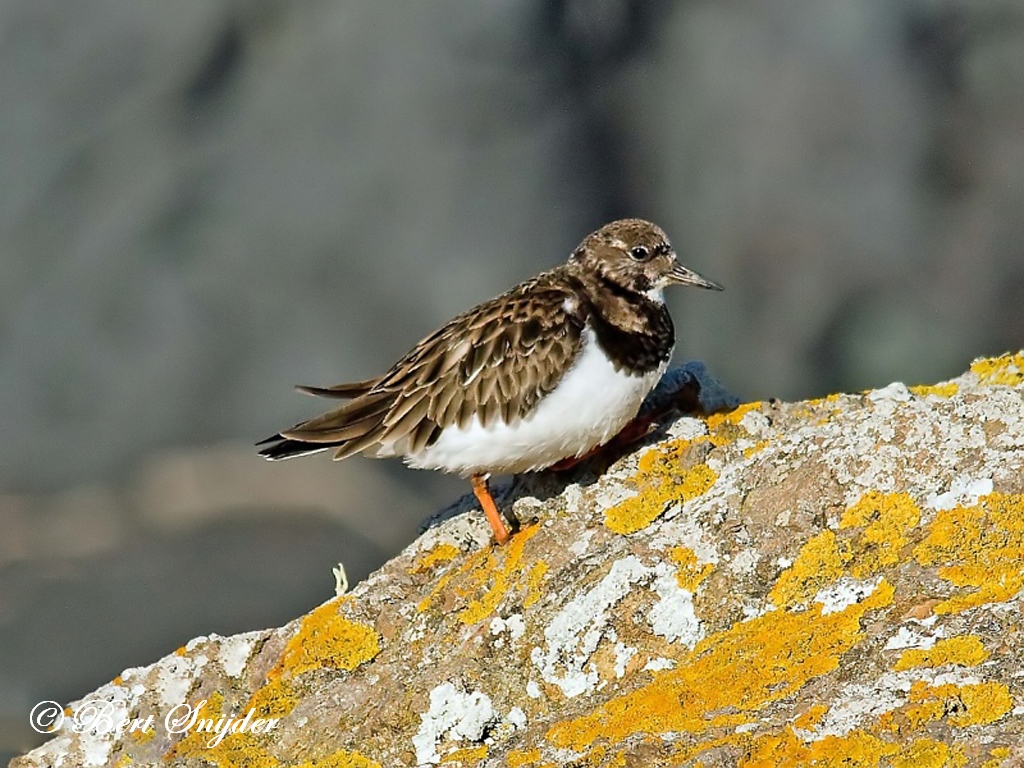

Other synonyms:
Afrikaans: Steenloper
Asturian: Entornarraxes, Güelveraxes
Breton: Ar golvan aod
Catalan: Girapedres, Merita, Remena-rocs
Catalan (Balears): Girapedres
Valencian: Merita
Cebuano: talingting
Czech: Kamenácek pestrý, kameòáèek pestrý
Welsh: Cwtaid y traeth, Cwtiad y traeth, Hutan y môr, Hutan-y-môr
Danish: Stenvender
German: Steinwaelzer, Steinwälzer
Emiliano-romagnolo: Flena
English: Calico-back, Ruddy Turnstone, Turnstone
Esperanto: ^stonturnulo
Spanish: Alzacolita colorada, Playero Turco, Playero vuelvepiedras, Revuelvepiedras, Vuelvepiedras, Vuelvepiedras Común, Vuelvepiedras Rojizo
Spanish (Argentine): Vuelvepiedras
Spanish (Chile): Playero vuelvepiedras
Spanish (Colombia): Vuelvepiedras Rojizo
Spanish (Costa Rica): Vuelvepiedras rojizo
Spanish (Cuba): Revuelvepiedras
Spanish (Dominican Rep.): Playero Turco
Spanish (Honduras): Alzacolita colorada
Spanish (Mexico): Vuelvepiedras Rojizo
Spanish (Nicaragua): Vuelvepiedras Rojizo
Spanish (Paraguay): Vuelvepiedras
Spanish (Uruguay): Revuelvepiedras, Vuelvepiedras
Spanish (Venezuela): Playero Turco
Estonian: Kivirullija
Basque: Harri-iraularia, Remena-rocs
Finnish: Karikukko
Faroese: Tjaldursgrælingur, Tjaldursgrælíngur
French: Tournepierre à collier, Tournepierre roux
Irish: Piardálai Trá, piardálaí trá
Guadeloupean Creole French: Pluvier des Salines
Gaelic: Gobhlachan, Trìlleachan Beag
Galician: Remena-rocs, Virapedras
Guarani: Chululu
Manx: Chyndaader clagh, Goblaghan
Haitian Creole French: Eriys
Hawaiian: ‘Akekeke
Hungarian: Köforgató, Kõforgató
Indonesian: Trinil pembalik-batu
Icelandic: Tildra
Italian: Voltapietre, Voltapietre comune
Inuktitut: Taliffak, Tellevak
Japanese: Kyojo-shigi, kyoujoshigi, Kyoujo-shigi
Cornish: Troyller meyn
Latin: Arenaria interpres
Lithuanian: Akmene
Malay: Kedidi Batu
Maltese: Monakella Imperjali
Dutch: Steenloper
Norwegian: Steindreier, Steinvender
Polish: kamusznik, kamusznik (zwyczajny), Kamusznik zwyczajny, Kuliczek piskliwy
Portuguese: agachada, Agachadeira, batiora, maçarico, maçarico turco, rola do mar, Rola-do-mar, Rolo-do-mar, vira-pedras
Portuguese (Brazil): agachada, agachadeira, batiora, maçarico, maçarico turco, Vira-pedras
Romansh: Rivarel mascrà
Russian: Kamnesharka
Scots: Gobhlachan, Trilleachan bheag
Northern Sami: Golláš
Slovak: Kamenár strakatý
Slovenian: kamenjar
Albanian: Gjelëza laramane
Serbian: Prudnik (zujavac) kamenjar, Prudnik kamenjar, Zujavac kamenjar
Swedish: Roskarl
Swahili: Kigeuzamawe
Tamil: [Allkatti]
Turkish: Tasçeviren
Travel Birdwatching Holiday Alentejo, Vacation Portugal for birders to see birds on your trip.